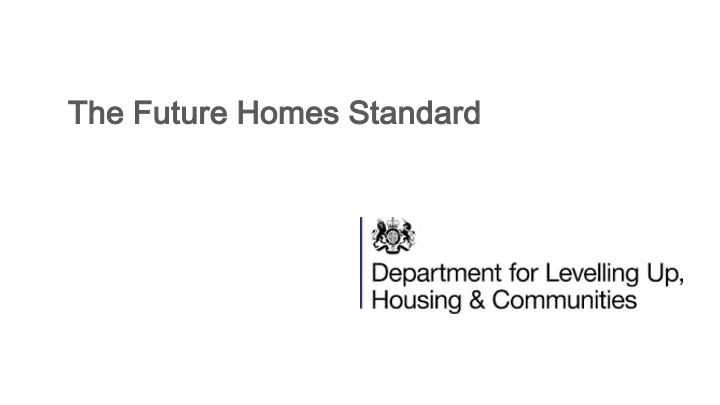With the government’s recent announcement that solar panels and low-carbon heating will become mandatory under the Future Homes Standard, the message is clear: the path to net zero for housing runs straight through our rooftops.
Solar photovoltaic (PV) technology is not new. For decades, it has quietly proven itself as a reliable and low-maintenance source of clean electricity. The UK, despite its unpredictable weather, has seen solar generation rise steadily.
The reasons for its growing role in the renewables mix are clear. The cost of solar panels has plummeted, making them accessible and a good investment for large-scale deployment and individual homes alike. Its modular nature means it can be fitted to new homes, retrofitted to existing stock and scaled from a single property to entire estates. As the grid continues to decarbonise and electricity becomes the mainstay of heating and transport, then solar offers a decentralised, visible and immediate way for households to contribute.
Solar also brings the unique advantage of generating electricity at the point of use, reducing transmission costs and helping balance local energy supply and demand. For housing providers, this means lower energy bills for residents, increased resilience and a practical step toward compliance with tightening energy standards.
Visibility of solar is a great strength. Residents can see panels on their roofs; watch their generation meters tick up and directly link the technology to savings on their bills. This tangible connection contrasts with more abstract decarbonisation measures, such as grid-scale renewables or insulation upgrades, which are invisible to the naked eye. Consumer surveys consistently show high levels of acceptance and even pride among residents with solar installations. Many appreciate the visible commitment to sustainability, while others enjoy the sense of contributing to the environment. The familiar sight of solar panels on schools, businesses and homes also helps normalise their presence.
For social landlords, this acceptance is crucial. Retrofit programmes succeed or fail on resident buy-in, and visibility makes it easier to communicate value and secure cooperation. In an age of consistently high energy prices, the prospect of lower bills is a powerful motivator.
With solar now set to be mandatory for new homes it is no longer a “nice to have” or a bolt-on for ambitious projects; it is a baseline requirement. Developers must consider design integration, ensuring roof orientation, pitch and shading are optimised for solar generation from the outset. This consideration could influence everything from street layouts to building heights.

Supply chain readiness will be vital, as the anticipated surge in demand for panels, inverters and skilled installers will put pressure on suppliers. Early engagement and planning with trusted partners will be essential. Developers will have to liaise closely with distribution network operators to ensure local grid capacity is sufficient and export arrangements are agreed upon. Developers will also need to prioritise clear communication with residents and customers about using, monitoring and maintaining solar systems. Maintenance and upkeep must also be planned. For social housing providers, the mandate is both a challenge and a catalyst for innovation, encouraging the design of communities that are not just compliant but genuinely sustainable.
Roofscapes will change, with south-facing, unshaded surfaces becoming increasingly valuable. Architects will need to balance aesthetics with performance, integrating panels seamlessly. The Future Homes Standard will also drive a holistic approach to low-carbon living. Solar operates best alongside high levels of insulation, airtightness, and efficient low-carbon heating systems such as heat pumps. New developments will likely emphasise reducing energy demand before meeting it with renewables.
For energy providers and installers, the new mandate represents clear economic benefits, but it will also test capacity and capability. Installers will need to scale up quickly by recruiting and training staff, investing in quality assurance and building strong relationships with manufacturers. Intelligent procurement has a role to play here, through frameworks designed to address such situations. Our newbuild framework is one such instrument.
Energy providers will likely continue to be flexible in their service offerings. Combining solar with batteries, heat pumps, and electric vehicle charging can create “smart homes” that optimise energy use, cut bills and support the grid. Collaboration between housing providers, developers, installers and the wider energy system will be crucial to deliver at scale and maintain public trust.
The development of the Future Homes Standard shows housing matters now. It should deliver more than a technical specification. It should be a statement of intent. For the
UK to meet its carbon targets, new homes must be genuinely low-carbon in operation, future-proofed against rising energy costs and resilient to a changing climate. The Standard must focus on resident outcomes, ensuring homes are comfortable and affordable with lower bills and improved wellbeing.

While the Future Homes Standard targets new homes, lessons should be able to be applied to retrofit projects. Integrating design, combining insulation, heating upgrades and solar in a coordinated package should help inform the possible. The visibility and familiarity of solar in new builds could also help normalise its adoption in retrofits.
On its publication in the Autumn, the Future Homes Standard will mark a turning point. By mandating solar and low-carbon heating, the era of high-carbon homes is ending, and a cleaner, fairer future is within reach. For social housing providers, this is a moment to lead. Embracing solar, engaging residents and collaborating with sector partners on business models will ensure every community benefits from a brighter future.



